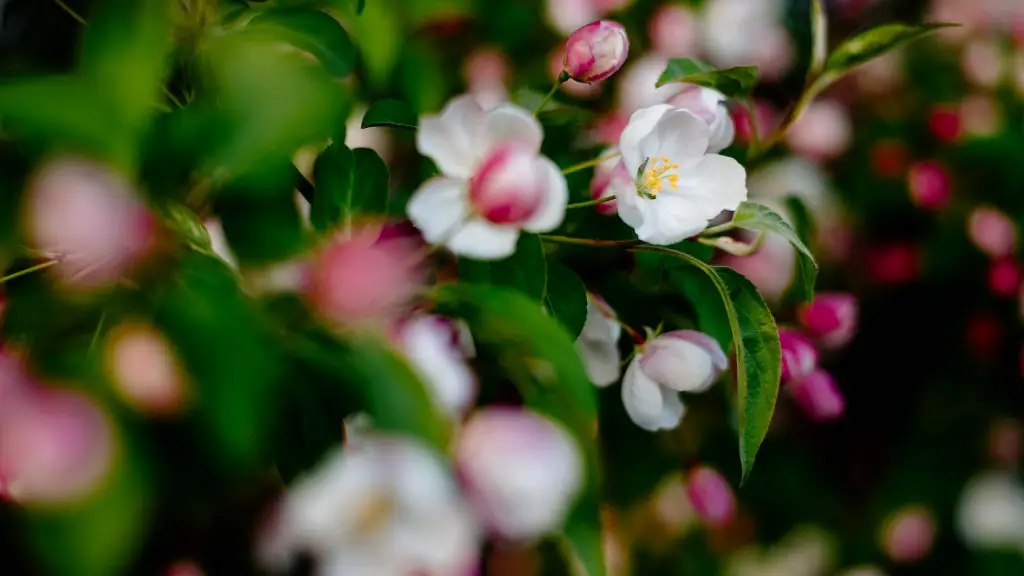Growing an avocado tree in a pot is an exciting endeavor, not just in terms of the delicious fruit they bring, but with the challenge of maintaining their health in a confined setting. It takes careful consideration to select the perfect pot size for an avocado tree, as too big and too small each can lead to different issues.
When purchasing a pot for an avocado tree, it should be large—big enough to hold the tree’s roots and allow for growth. According to Gardening Know How, a rule of thumb is to choose a pot that’s between 18 and 24 inches in diameter, and 12 to 18 inches in depth. If the pot is too small, the tree won’t have enough room to grow, and the roots will become overcrowded, resulting in stunted growth. Additionally, if the tree is root-bound, its ability to take in water and nutrients will be severely limited.
The material the pot is made of is also important—opt for a heavy pot, preferably one made out of terracotta or ceramic, so that the container can “breathe.” Such pots will help regulate soil temperature and moisture. Pots with a hole in the bottom for drainage should also be chosen. Plastic and other lightweight containers can be considered, but should be monitored more often to avoid excessive temperature changes or the risk of overwatering.
If an avocado tree is not planted directly into a pot, an appropriate-sized container should be filled with well-draining potting soil. Robert Kourik, an experienced landscape designer and author of several gardening books, suggests planting an avocado in a 50-percent peat moss, 25-percent perlite, and 25-percent soil mix. Potting soil alone may prevent water and air from penetrating, thus making it difficult for the tree to uptake nutrients and oxygen, leaving it susceptible to diseases.
Whether planting directly into the container or transferring an existing tree, it’s important to water the soil correctly. According to the Penn State Extension Program, a newly planted tree should be watered until the water begins to come out of the bottom of the pot. During the growing season, an avocado tree should be watered once a week. According to the University of California Agriculture and Natural Resources department, the amount of water is dependent on the size of the pot – for an 18- to 24-inch diameter container, for example, the tree should be watered with one to two gallons of water, soaking the soil until it infiltrates through the bottom of the pot.
Fertilization
Avocado trees need regular fertilization in order to thrive. During the growing season (spring through summer), they should be fertilized every four to six weeks with a high-nitrogen, citrus-type fertilizer. The wrong type of fertilizer can lead to poor root development or overgrowth of the tree’s canopy. For example, a fertilizer specifically designed for trees and shrubs has a lower nitrogen ratio, as these plants need more phosphorus and potassium for general growth and maintenance.
If the avocado tree is properly watered and fertilized, pruning may not be necessary. If, however, the tree begins to outgrow its pot, the top can be cut back to slow its growth. The University of California suggests that when the tree has reached its maximum size, pruning should be done during the dormant season (fall and winter) and take no more than one-third of the plant. Pruning should focus on reducing the canopy of the tree, leaving the main branches intact.
Although it’s not easy to keep an avocado tree healthy in a pot, the right size, material, and soil mixture are important steps to ensure it can grow. Choosing the right fertilizer, watering it regularly, and pruning it in the winter are also key to its long-term health. With the right care, an avocado tree in the right pot can reward its grower with delicious fruit in a few to several years.
Repotting
An avocado tree should be repotted once it outgrows its original container. Older trees that have become root-bound may require a bigger pot, so the roots can spread out. Repotting should be done in the springtime, preferably in a bigger-sized pot than its original container. Kourik suggests a 24 to 36 inch diameter pot for an avocado tree, depending on its size. The new pot should be filled with fresh potting soil and secured onto a stable platform such as a table or patio to avoid it from tipping over.
When transferring an avocado tree from its original container, make sure to remove any dirt from the roots and look for any pests. If the tree is root-bound, it should be carefully untangled with fingers or pruned with a sharp sterilized tool. Before placing the tree into the new pot, make sure to fill the bottom with soil, create a mound of soil in the center, and place the roots on top of the mound, spreading them out evenly. Pack the soil into the pot and around the roots, then water the tree with one to two gallons of water.
Lastly, the tree should be sheltered from extreme temperatures and direct sunlight for at least two weeks. The University of California Agriculture and Natural Resources recommends giving the tree light shade to help it become acclimated to its new environment.
Pest Control
Just as with any other plant, an avocado tree in a pot can be susceptible to different pests. Common avocado pests include aphids, mites, mealybugs, and avocado thrips. Proper air circulation and making sure the tree isn’t too wet or too dry are important steps in preventing infestation. If a pest infestation occurs, the use of insecticidal soap or neem oil is usually successful in getting rid of the problem.
When searching for pests, keep an eye out for sooty mold, a black, soot-like fungus on the tree’s leaves. This is an indication that there are other pests that are feeding on the tree’s sap, and it can be a symptom of other more serious issues. In such cases, it’s best to quarantine the tree from other plants, identify the pest, and then take the steps necessary to get rid of the infestation.
Avocado trees in pots can require a lot of work, but with the right size, soil, and fertilization, anyone who’s willing to put in the effort can watch their trees grow into something special. A properly cared for avocado tree will supply delicious fruit—a reward that will make all the effort worthwhile.
Active Care
Although an avocado tree can thrive in smaller containers, this doesn’t mean that it should be neglected. Regular maintenance and active care is key in ensuring it grows healthy and strong, and produces a good crop of fruit.
Apart from the soil and fertilizer requirements, the University of California Agriculture and Natural Resources recommends that the soil and pot walls should be inspected for signs of pests or fungal disease. The pot should also be checked for root rot, which is a condition caused by overwatering or poor drainage. If it is found, the tree should be repotted with fresh soil and fertilizer as soon as possible.
Regular pruning is also important for avocado trees; it helps keep them at a manageable size and encourages more flowers and fruit in the springtime. Again, when pruning, focus on reducing the canopy and removing any weak growth, such as dead branches or smaller, thinner leaves. Pruning should be done during the winter while the tree is dormant.
Finally, it’s important to keep in mind that avocado trees do best in warm weather. The ideal temperature range is between 60 and 80 degrees Fahrenheit. During the winter months, when temperatures are colder, the tree should be moved indoors or provided with a “cozy” layer of insulation.
Nutrition
Being mindful of what goes into the pot is important in keeping an avocado tree healthy. Regular fertilization helps keep the tree nourished, but depending on the soil, additional minerals may be necessary. If a soil test shows that the soil is lacking essential minerals, consider using a foliar fertilizer. Food grade minerals like Epsom salts, for example, can be mixed with water and then sprayed on the tree’s leaves, thus giving it some extra nutrition.
While too much fertilizer can be harmful to the avocado tree, so can too little. In either case, the tree may show signs of nutrient deficiencies such as yellow leaves. To determine the cause, it’s best to check the soil for pH levels, as too acidic or alkaline of an environment can prevent the tree from taking in nutrients. pH levels should be between 6.5 and 7.5. Adding some lime or sulfur to the soil can help adjust the pH levels, if needed.
For an avocado tree in a pot, a balanced nutrient mix is key in keeping it healthy and producing good fruit yields. A balanced fertilizer, such as NPK (nitrogen, phosphorus, and potassium) should be applied at least once a month during the growing season, and once a year during the dormant season. Using a fertilizer with both liquid and granulated forms is a good idea, as some of the granules will break down slower, providing the tree with more nutrients over a longer period of time.
Support
Avocado trees in pots can become top-heavy over time. If an avocado tree begins to lean or topple, support can be given by cutting a sturdy branch off of the tree and securing it in the pot. The branch should be placed at an angle so that it’s pointing downward, thus allowing the tree to lean against it. The branch can then be secured in the pot with twine, but make sure to leave enough slack so that the tree can continue to grow.
If the tree is leaning too far back, a stake can be used as a brace. Place the stake at least six inches away from the tree and make sure to secure it to the pot with twine. It should be set at an angle so that the tree can lean against it, then the stake should be tied to the tree with more twine.
For taller trees, stakes can be inserted into the pot, one in the front and one in the back. The stakes should be placed at an angle and then secured to the pot with twine. Make sure that the twine is not too tight, so the tree can still sway in the wind.
Support isn’t just cosmetic; it’s an important part of keeping an avocado tree safe and healthy. Securing large trees in this way prevents them from toppling over, which can damage the roots and disrupt their growth.



